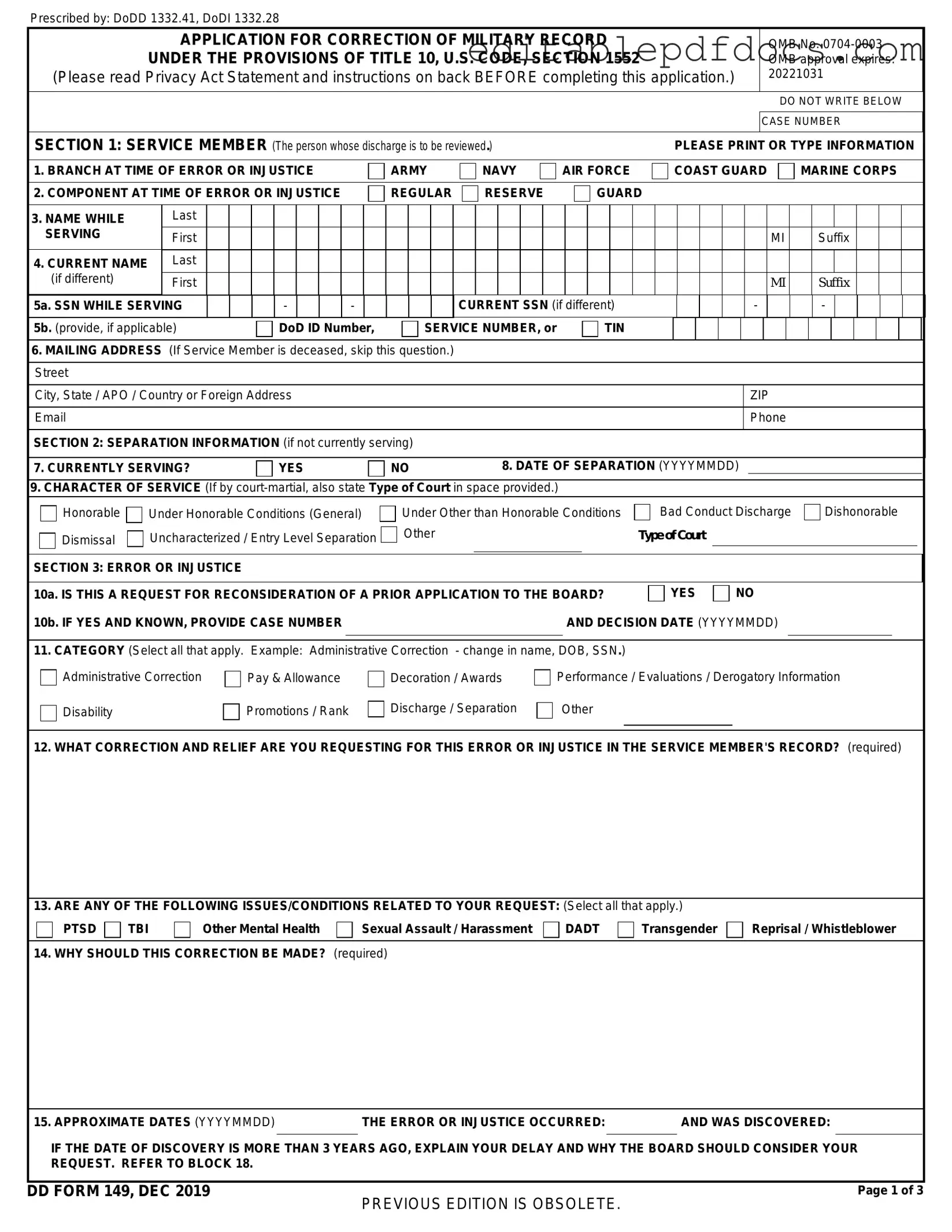Filling out the DD 149 form, which is used to apply for a correction of military records, can be a straightforward process. However, many individuals make common mistakes that can lead to delays or denials. Understanding these pitfalls is essential for a successful application.
One frequent error is incomplete information. Applicants often fail to fill out all required fields. Each section of the form is important, and missing information can result in the application being returned or rejected. Take the time to review the form thoroughly before submission.
Another mistake involves incorrect contact information. It is vital to provide accurate phone numbers and addresses. If the reviewing authority cannot reach the applicant for clarification or additional information, this can stall the process significantly.
Many people also neglect to include supporting documentation. The DD 149 form requires evidence to support the request for correction. Without this documentation, the application may lack credibility and be dismissed. Always attach relevant records, such as discharge papers or medical records, to bolster the case.
Applicants sometimes fail to sign and date the form. An unsigned application is not valid and will be returned. Ensure that all required signatures are present, as this is a crucial step in the submission process.
Additionally, people often overlook the specificity of the request. The form should clearly outline what corrections are being requested. Vague requests can lead to confusion and may not be acted upon. Clearly state the desired changes to avoid misunderstandings.
Another common issue is using outdated forms. The military occasionally updates forms and requirements. Submitting an outdated version can lead to complications. Always check for the most current version of the DD 149 before filling it out.
Some applicants also make the mistake of not following submission guidelines. Each branch of the military may have different procedures for submitting the DD 149. Familiarize yourself with these guidelines to ensure proper submission and avoid unnecessary delays.
Finally, a lack of patience and follow-up can be detrimental. After submitting the form, applicants should be prepared for a waiting period. Following up with the appropriate office can help keep the application on track, but excessive inquiries can be counterproductive.
By avoiding these mistakes, individuals can improve their chances of a successful application for correction of military records. Careful attention to detail and adherence to guidelines are essential for navigating this process effectively.
